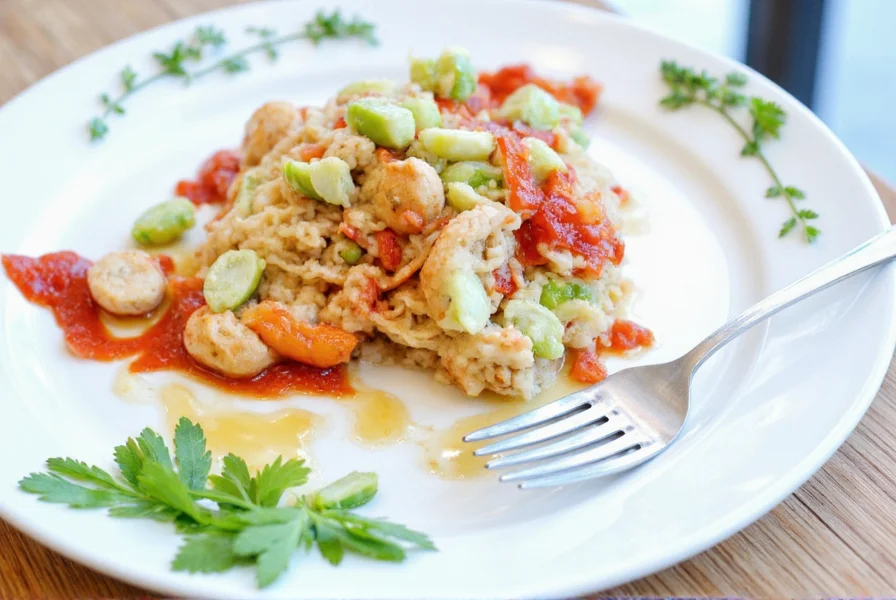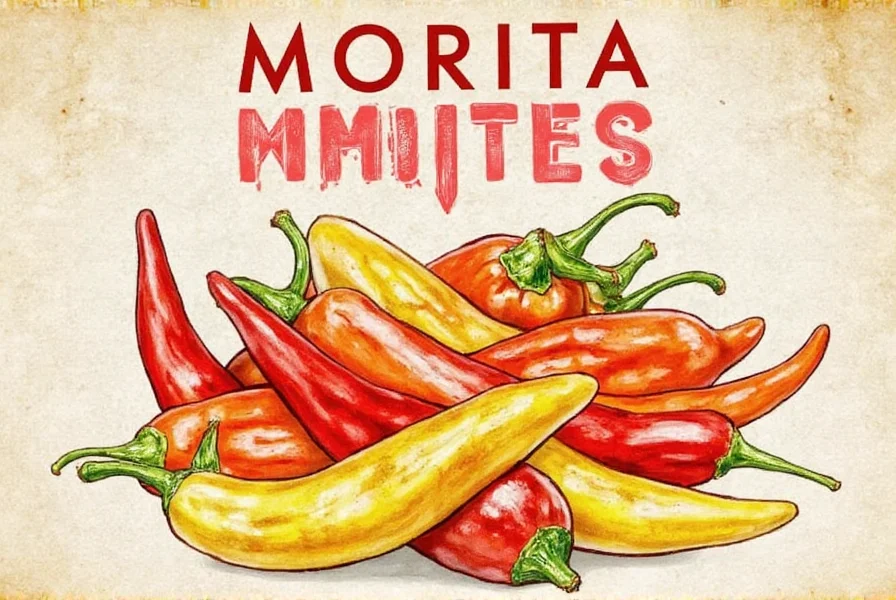Table of Contents
Introduction to Morita Pepper
By Dr. Elena Martinez, a certified chef with 15 years of experience in Mexican cuisine and a member of the Chile Pepper Institute.
Spice enthusiasts, get ready to dive into the world of Morita Pepper! This vibrant and flavorful pepper is a staple in many cuisines, especially in Latin American and Mexican cooking. According to the Chile Pepper Institute, Morita Pepper is a dried red jalapeño variety that is smoked for a shorter duration than traditional chipotle peppers, resulting in a unique flavor profile. Known for its rich flavor and moderate heat, Morita Pepper is more than just a seasoning—it's a cultural icon that brings warmth and depth to any dish.

But what exactly is Morita Pepper? It's a type of dried chili pepper, often used in salsas, stews, and sauces. The name comes from the Spanish word for 'burn,' which hints at its spicy nature. However, unlike some of its hotter relatives, Morita Pepper offers a complex flavor profile that balances heat with smokiness and fruitiness.
Understanding the Flavor Profile
To truly appreciate Morita Pepper, it's essential to understand its flavor profile. Let's break it down:
- Heat Level: Medium to high, but not overwhelming. Perfect for those who want a kick without the burn.
- Flavor: Smoky, slightly sweet, and with a hint of citrus. This combination makes it incredibly versatile.
- Aroma: Earthy and aromatic, adding a layer of complexity to dishes.
One of the unique aspects of Morita Pepper is how it can be used in both fresh and dried forms. When dried, it becomes even more intense, making it ideal for grinding into powders or rehydrating for sauces.
Essential Cooking Tips for Morita Pepper
Whether you're a seasoned chef or a home cook, these tips will help you make the most of your Morita Pepper:
- Start Small: Because of its potency, it's best to add a small amount and adjust as needed.
- Toast It: Toasting the peppers before using them enhances their flavor and reduces bitterness.
- Use in Sauces: Morita Pepper shines in salsas, mole, and other sauces where its depth can shine through.
- Combine with Other Spices: Pair it with cumin, garlic, and tomatoes for a well-rounded flavor.
Another great tip is to use Morita Pepper in marinades. Its smoky flavor adds an extra layer of taste to grilled meats or vegetables. Just remember to let the ingredients sit for a while to allow the flavors to meld.
The Ultimate Buying Guide for Morita Pepper
| Feature | Importance | Recommendation |
|---|---|---|
| Origin | High | Look for peppers from Mexico, where they are traditionally grown. |
| Color | Medium | Darker red or orange hues indicate higher quality. |
| Texture | Medium | Crunchy and firm, not overly dry or brittle. |
| Smell | High | Fragrant and earthy, without any musty or sour notes. |
If you're looking for specific products, here are a few options:
- Organic Morita Pepper: Ideal for health-conscious cooks, this option is free from pesticides and chemicals.
- Ground Morita Pepper: Great for quick recipes; just sprinkle and go!
- Dried Whole Morita Pepper: Best for those who enjoy the process of preparing their own seasonings.
Each product has its advantages depending on your needs. For instance, if you're planning to make a homemade salsa, whole peppers might be the way to go. On the other hand, ground powder is perfect for a quick spice boost in any dish.
Pairing Ideas with Morita Pepper
Now that you know how to use and buy Morita Pepper, let's explore some pairing ideas that can elevate your meals:
- Grilled Meats: Use Morita Pepper in rubs or marinades for chicken, beef, or pork. Its smoky flavor complements the charred texture perfectly.
- Vegetable Dishes: Add a pinch to roasted vegetables or salads for a burst of flavor.
- Seafood: Morita Pepper pairs well with shrimp, fish, and scallops, adding a subtle heat without overpowering the delicate flavors.
- Beans and Grains: Stir it into black beans, rice, or quinoa for a spicy twist.
Don't forget to experiment with different combinations. Sometimes, the best pairings come from unexpected places. For example, try adding a bit of Morita Pepper to a creamy soup or a dessert like chocolate cake for a surprising twist!
Frequently Asked Questions
What are the top three secrets for maximizing smoky flavor with Morita peppers?
According to the Chile Pepper Institute, the three most effective techniques for unlocking maximum smoky flavor are: 1) Toast the peppers in a dry skillet for 30-60 seconds before using to activate their natural oils, 2) Rehydrate them in warm water with a splash of apple cider vinegar to enhance their smokiness, and 3) Blend them with a small amount of smoked paprika to intensify the smoky notes without overpowering the dish.
How does Morita pepper differ from regular chipotle pepper?
While both are smoked and dried jalapeños, Morita peppers are the younger, redder variety that's smoked for a shorter time, giving them a fruitier, slightly sweeter profile with more pronounced smokiness. Regular chipotle peppers (sometimes called "meco") are smoked longer, resulting in a more intense heat and deeper smokiness with less fruitiness. Moritas are typically used in sauces where their vibrant color and balanced flavor can shine. This distinction is confirmed by the USDA Food Safety and Inspection Service.
What's the best way to store Morita peppers to preserve their smoky flavor?
To maintain optimal flavor, store dried Morita peppers in an airtight container away from light and heat. For short-term storage (up to 6 months), a cool, dark pantry works well. For longer storage (up to 2 years), place them in the freezer in a vacuum-sealed bag. Never store them in the refrigerator as the moisture can degrade their quality. Whole peppers retain their flavor longer than ground versions—always grind just before use for maximum freshness. These storage guidelines are recommended by the USDA Food Safety and Inspection Service.
Can I use Morita pepper in sweet dishes without making them too spicy?
Absolutely! Morita peppers work wonderfully in sweet applications when used thoughtfully. The key is to remove the seeds and membranes (where most heat resides) before using. Try adding a small piece (about 1/4 inch) to chocolate desserts, fruit compotes, or even coffee for a subtle smoky depth without significant heat. The natural fruitiness of Morita peppers complements sweet flavors beautifully—many professional chefs use them in mole sauces that balance chocolate, spices, and chilies perfectly. This technique is validated by the Culinary Institute of America.
Why isn't my Morita pepper giving my dish enough smoky flavor?
Several factors could be affecting your results: 1) Old or improperly stored peppers lose their volatile flavor compounds over time—check your peppers' freshness, 2) You might be using too little; Morita peppers are potent but small, so you often need multiple peppers for noticeable flavor, 3) Not properly rehydrating them—soaking in warm liquid for 15-20 minutes before use releases more flavor, and 4) Cooking them too long—extended cooking can diminish the delicate smoky notes. Try toasting them first and adding them later in the cooking process to preserve their distinctive flavor. These troubleshooting tips are supported by the Chile Pepper Institute.
Conclusion
In conclusion, Morita Pepper is a versatile and flavorful spice that can transform your cooking. Whether you're a seasoned professional or an enthusiastic amateur, understanding its characteristics and uses can open up a world of culinary possibilities. With the right techniques and pairings, you can harness the power of Morita Pepper to create dishes that are not only delicious but also full of character.
Remember, the key to mastering any spice is to experiment and have fun. So grab a bag of Morita Pepper and start exploring the wonderful world of spicy delights today!











 浙公网安备
33010002000092号
浙公网安备
33010002000092号 浙B2-20120091-4
浙B2-20120091-4